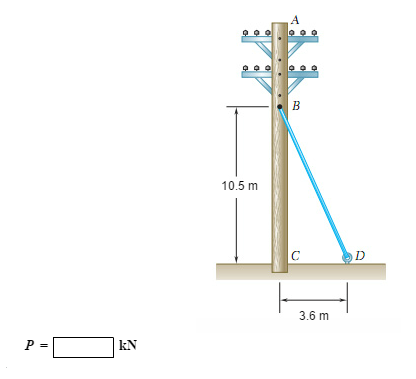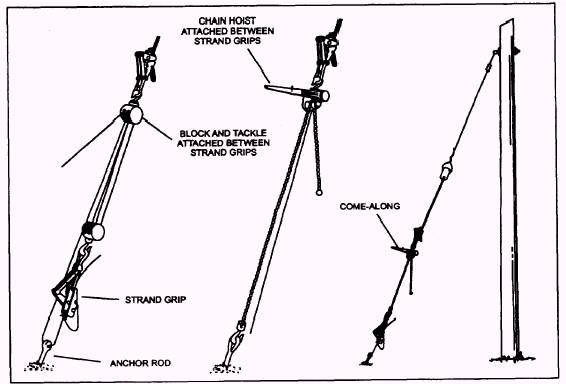

The Ruling Span is a weighted average span.

If we string the different length spans at the same tension, what stringing tension do we use and what final tension doe we use in the guying calculation? The tensions we are looking for are the tensions of the “Ruling Span”. the longer the span, the higher the tension. If each span is designed separately, the tension of the conductors in each span is a function of the span length, i.e. If all spans are not the same length, this stringing technique complicates the design. The increased sag may cause a clearance violation.Īll the spans of a multi-span line are usually strung at the same time and at the same tension.

Using a shortlead increases the probability of the anchor slipping (pulling out) or the pole sinking, either of which will cause the pole to lean and the conductors’ sag to increase. The shorter the guy lead, the higher the tension in the guy wire and anchor and the higher the vertical force on the pole. The vertical force “V” on the pole due to the anchor is the tension in the guy wire “T” multiplied by the sine of the angle “A”.įor grades B and C construction, the vertical strength of the pole and its’ foundation must exceed the vertical force on the pole “V” multiplied by the appropriate safety factor specified in Rules 261A and B, respectively, or the pole may buckle or sink. The rated strength of the anchor must take into consideration the type of soil in which it is installed. For a discussion of Safety Factors, see my article “Strong Enough to be Safe” in the January/February issue. The angle “A” is the arctangent of the guy attachment height divided by the guy lead.įor grade B and C construction, the rated strength of the guy wire and the anchor must exceed the guy tension “T” multiplied by the appropriate safety factors specified in Rules 261 C and B, respectively. The tension in the guy wire and the anchor is the longitudinal load on the pole due to the conductor “H” divided by the cosine of the angle “A”.
UTILITY POLE GUY WIRE INSTALL
Let’s assume we will install our anchor in the ground about 20 feet from the pole. Referring back to the heavy loading district Sag/Tension table for 477 AAC presented in Part 2 (May/June issue), the final tension of the conductor at 0 degrees F. The “longitudinal load” or force on the pole the anchor guy must hold is the final tension of the conductor under the conditions specified by Table 250-1 for the applicable loading district. To prevent the poles from breaking at or near the ground line and to prevent the poles from kicking out (tipping over due to foundation failure), we need to install an anchor guy on each pole The conductor is dead-ended on each pole at a height of 35 feet. Consider a single 250 foot span of 477 AAC “Cosmos” conductor strung between two poles at a stringing tension of 1410 pounds at 60 degrees F. To understand the principles of anchor guying, let’s look at a simple example. Though poles and foundations can be designed with enough strength to hold the tension, guying is much more economical. Stringing conductors between poles puts tension on the poles. The last step in the design of a high-voltage overhead line up to 50 kV to comply with the NESC is to design the guying.

In Part 3 (July/August issue) we determined the height of our structures and the strength of our structures and foundations to comply with the National Electrical Safety Code® (NESC®).


 0 kommentar(er)
0 kommentar(er)
